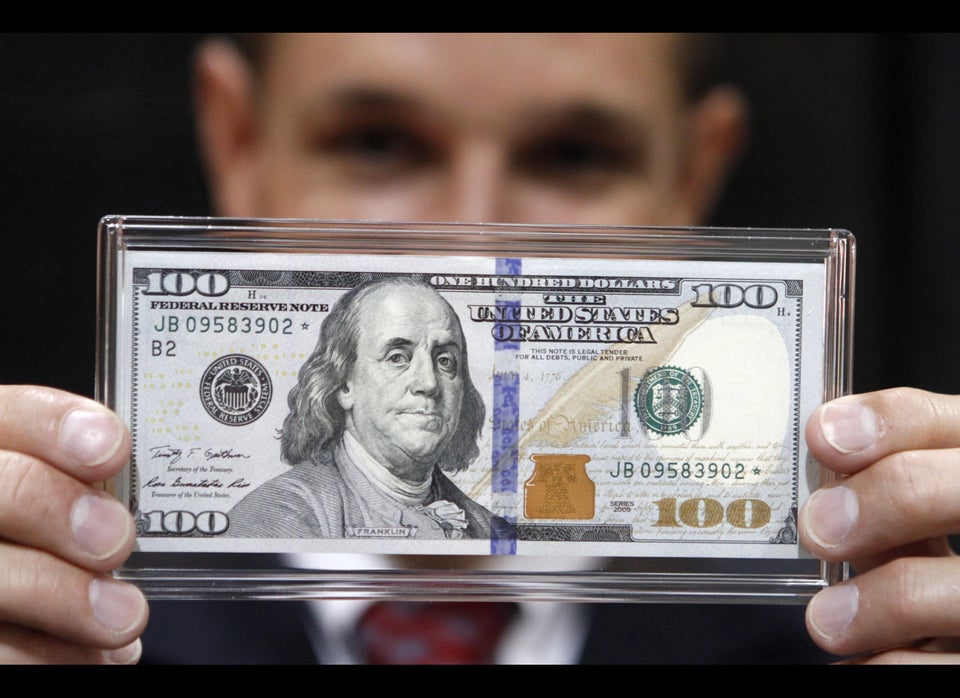When Ben Bernanke speaks, the bond market listens. And panics, lately.
Bond prices have plunged -- sending interest rates, which move in the opposite direction of prices, soaring -- since the Federal Reserve Chairman first hinted back in May that the Fed could curb its program to buy $85 billion per month in bonds to keep rates low. The bond-market bloodbath has gotten gorier since last week, when Bernanke confirmed that the Fed indeed planned to taper its bond-buying, known as "quantitative easing," or "QE," or "bond-market meth."
Since early May, the yield on the benchmark 10-year Treasury note has jumped one full percentage point, from 1.62 percent to 2.62 percent on Monday morning. This represents a 62 percent increase in borrowing costs for the Federal government -- and also for mortgage borrowers, because mortgage rates are directly tied to the 10-year note rate -- in just a month.
It is the biggest single move in interest rates since at least 1962, according to Dan Greenhaus, chief global strategist at the New York brokerage firm BTIG.
Thanks to this rise in the 10-year note yield, the average going rate for a 30-year fixed-rate mortgage has also risen by a full percentage point, to about 4.4 percent, according to Walter Schmidt, a mortgage strategist at FTN Financial in Chicago.
The surge in rates will likely squeeze mortgage refinancing and borrowing and could smother the recent rebound in the housing market, which has largely been driven by investors taking out cheap loans to buy cheap houses. Regular borrowers were already having a hard time finding loans, and they'll have an even harder time now.
In normal times, a sell-off in super-safe Treasury bonds might be accompanied by gains in riskier assets, like stocks and commodities. But those have been pounded, too. The Dow Jones Industrial Average was down another 200 points on Monday, its third big swoon in the past four trading days. The Dow is down more than 5 percent from its closing record high on May 28. Other U.S. stock indexes are down by a similar amount. Gold prices, meanwhile, have tumbled 28 percent from their peak in early October.
Breaking an addiction -- meth, or QE -- is hard and involves a painful adjustment period. Interest rates had been at record lows and were bound to rise eventually. That didn't have to be the end of the world.
"If interest rates go up for the right reasons, that is both optimism about the economy and an accurate assessment of monetary policy, that's a good thing," Bernanke said in his June 19 press conference to discuss the Fed's latest monetary policy decision. "That's not a bad thing."
But Bernanke also said that the bond market seemed to have gone a little too far in pricing in slower bond purchases, something he said left him "a little puzzled." At the time he spoke, interest rates had risen by about a half a percentage point. In just the few days since, they have jumped by that amount again, which should leave him more than a little puzzled.
It seems clear that Bernanke and the Fed had no idea just how much the market would freak out about their plan. Right or wrong, the market doesn't seem to believe that the economy is anywhere near strong enough to withstand a Fed pullback. Job growth is steady but anemic, with unemployment at a still-high 7.6 percent. And unemployment has mainly been falling because people have left the labor force in despair.
So the Fed is failing at one half of its dual mandate, creating full employment. It's also failing on the other half of its mandate, keeping inflation steady: Investors in the market for Treasury Inflation Protected Securities have driven 10-year inflation expectations down below 2 percent, the level of inflation the Fed has targeted. In other words, the bond market expects the Fed to fail for the next decade.
Given these conditions, it is a mystery why Bernanke decided to tell the market he planned to withdraw stimulus. St. Louis Fed President James Bullard, who made a rare show of ripping Bernanke's communication strategy to shreds last week, was right.
Bernanke left the door wide open to change his mind, and even to increase stimulus if the economy worsens. He seemed to think that hedging was more than enough to calm the market. He was wrong: He gave the market a blueprint for the future, one that involved less bond-buying, and markets responded accordingly.
The Fed is clearly disturbed by that response, telling Wall Street Journal Fed scribe Jon Hilsenrath that it thinks the market has misinterpreted its plans.
It is actually Bernanke and the Fed (aside from Bullard) who have an interpretation deficit. The market may soon force Bernanke to see things its way a little more clearly.
